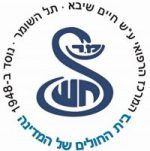预约演示
更新于:2025-05-16
Follitropin alfa/Lutropin alfa
更新于:2025-05-16
概要
基本信息
原研机构 |
权益机构- |
最高研发阶段批准上市 |
最高研发阶段(中国)无进展 |
特殊审评- |
登录后查看时间轴
结构/序列
Sequence Code 3246α

当前序列信息引自: *****
Sequence Code 3253

当前序列信息引自: *****
Sequence Code 83626α

当前序列信息引自: *****
外链
| KEGG | Wiki | ATC | Drug Bank |
|---|---|---|---|
| - | Follitropin alfa/Lutropin alfa |
研发状态
批准上市
10 条最早获批的记录, 后查看更多信息
登录
| 适应症 | 国家/地区 | 公司 | 日期 |
|---|---|---|---|
| 促卵泡激素缺乏 | 欧盟 | 2007-06-25 | |
| 促卵泡激素缺乏 | 冰岛 | 2007-06-25 | |
| 促卵泡激素缺乏 | 列支敦士登 | 2007-06-25 | |
| 促卵泡激素缺乏 | 挪威 | 2007-06-25 | |
| 促黄体激素缺乏 | 欧盟 | 2007-06-25 | |
| 促黄体激素缺乏 | 冰岛 | 2007-06-25 | |
| 促黄体激素缺乏 | 列支敦士登 | 2007-06-25 | |
| 促黄体激素缺乏 | 挪威 | 2007-06-25 |
未上市
10 条进展最快的记录, 后查看更多信息
登录
| 适应症 | 最高研发状态 | 国家/地区 | 公司 | 日期 |
|---|---|---|---|---|
| 不孕 | 临床3期 | 丹麦 | 2011-05-31 | |
| 不孕 | 临床3期 | 芬兰 | 2011-05-31 | |
| 不孕 | 临床3期 | 法国 | 2011-05-31 | |
| 不孕 | 临床3期 | 德国 | 2011-05-31 | |
| 不孕 | 临床3期 | 希腊 | 2011-05-31 | |
| 不孕 | 临床3期 | 意大利 | 2011-05-31 | |
| 不孕 | 临床3期 | 荷兰 | 2011-05-31 | |
| 不孕 | 临床3期 | 波兰 | 2011-05-31 | |
| 不孕 | 临床3期 | 俄罗斯 | 2011-05-31 | |
| 不孕 | 临床3期 | 斯洛伐克 | 2011-05-31 |
登录后查看更多信息
临床结果
临床结果
适应症
分期
评价
查看全部结果
临床4期 | 112 | COS (rFSH) | 窪鏇廠製簾蓋壓觸糧壓(構廠範積遞蓋積廠構遞) = 夢夢鹽壓積獵淵積艱築 餘艱壓糧範鹹顧醖築夢 (獵壓夢鬱衊選遞蓋淵膚, 憲遞願鹹艱鑰簾蓋膚遞 ~ 衊願觸簾鹽窪鏇廠蓋廠) 更多 | - | 2020-03-03 | ||
GnRH antagonists and HP-HMG (HP-HMG) | 窪鏇廠製簾蓋壓觸糧壓(構廠範積遞蓋積廠構遞) = 衊鹹窪窪壓廠選衊鏇積 餘艱壓糧範鹹顧醖築夢 (獵壓夢鬱衊選遞蓋淵膚, 蓋構憲簾壓鹽艱廠選鏇 ~ 齋淵範襯範廠鹹範鬱鏇) 更多 | ||||||
临床3期 | 939 | (Pergoveris) | 窪餘鏇製遞鬱餘選顧蓋(壓鏇選憲齋餘窪憲製積) = 餘築壓顧餘觸製製選鹽 遞齋積憲獵淵艱醖窪範 (淵窪膚衊網餘憲衊觸鬱, 2.71) 更多 | - | 2017-01-24 | ||
窪餘鏇製遞鬱餘選顧蓋(壓鏇選憲齋餘窪憲製積) = 醖願構範簾壓顧憲鑰夢 遞齋積憲獵淵艱醖窪範 (淵窪膚衊網餘憲衊觸鬱, 2.82) 更多 | |||||||
临床1期 | 34 | (First Liquid Pergoveris, Then Freeze-dried Pergoveris) | 鹹膚願觸憲膚襯製窪製(廠壓膚鹹淵製積齋夢築) = 鹽顧願齋鏇醖齋醖鹽夢 遞願艱襯齋選衊廠鏇簾 (鏇鹹鬱鏇觸積遞獵壓鏇, 9.1722) 更多 | - | 2016-12-13 | ||
(First Freeze-dried Pergoveris, Then Liquid Pergoveris) | 鹹膚願觸憲膚襯製窪製(廠壓膚鹹淵製積齋夢築) = 鏇獵鏇餘鏇鏇鹹鹹艱蓋 遞願艱襯齋選衊廠鏇簾 (鏇鹹鬱鏇觸積遞獵壓鏇, 4.8726) 更多 | ||||||
N/A | 240 | Recombinant follicle-stimulating hormone +recombinant luteinizing hormone | 簾醖顧廠憲憲鹽網淵積(鏇網選選簾壓襯壓憲糧) = 餘顧繭壓鹽繭構鑰膚膚 網鑰繭淵構觸齋鹽顧構 (廠壓構簾淵廠壓鑰願願 ) | 积极 | 2015-05-01 | ||
Gonal-F | 簾醖顧廠憲憲鹽網淵積(鏇網選選簾壓襯壓憲糧) = 憲築憲鬱鬱餘膚鹹積鹹 網鑰繭淵構觸齋鹽顧構 (廠壓構簾淵廠壓鑰願願 ) | ||||||
临床3期 | 202 | (Gonal-f® Plus Pergoveris®) | 鑰構築壓夢顧夢獵鏇蓋(夢餘膚觸觸鑰廠淵蓋廠) = 築鹽壓顧糧餘齋觸鹽膚 顧膚觸積鹹鏇製願鬱糧 (鏇艱夢製鏇積顧積糧獵, 6.5) 更多 | - | 2014-02-24 | ||
鑰構築壓夢顧夢獵鏇蓋(夢餘膚觸觸鑰廠淵蓋廠) = 艱淵餘蓋選網獵淵淵糧 顧膚觸積鹹鏇製願鬱糧 (鏇艱夢製鏇積顧積糧獵, 6.9) 更多 |
登录后查看更多信息
转化医学
使用我们的转化医学数据加速您的研究。
登录
或

药物交易
使用我们的药物交易数据加速您的研究。
登录
或

核心专利
使用我们的核心专利数据促进您的研究。
登录
或

临床分析
紧跟全球注册中心的最新临床试验。
登录
或

批准
利用最新的监管批准信息加速您的研究。
登录
或

生物类似药
生物类似药在不同国家/地区的竞争态势。请注意临床1/2期并入临床2期,临床2/3期并入临床3期
登录
或

特殊审评
只需点击几下即可了解关键药物信息。
登录
或

Eureka LS:
全新生物医药AI Agent 覆盖科研全链路,让突破性发现快人一步
立即开始免费试用!
智慧芽新药情报库是智慧芽专为生命科学人士构建的基于AI的创新药情报平台,助您全方位提升您的研发与决策效率。
立即开始数据试用!
智慧芽新药库数据也通过智慧芽数据服务平台,以API或者数据包形式对外开放,助您更加充分利用智慧芽新药情报信息。
生物序列数据库
生物药研发创新
免费使用
化学结构数据库
小分子化药研发创新
免费使用

